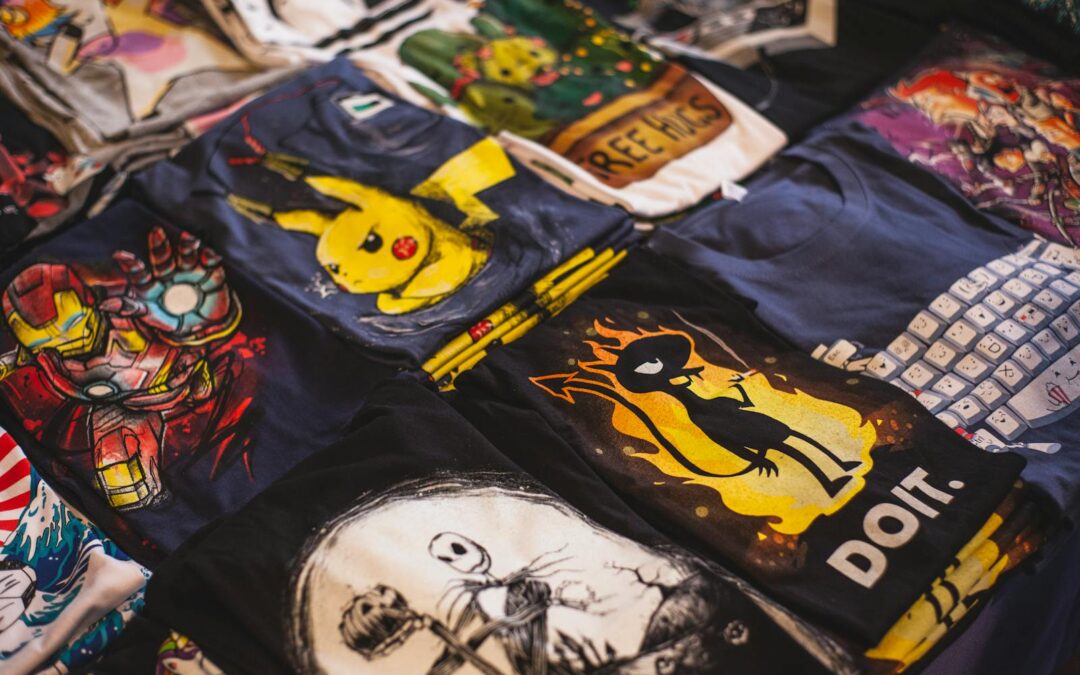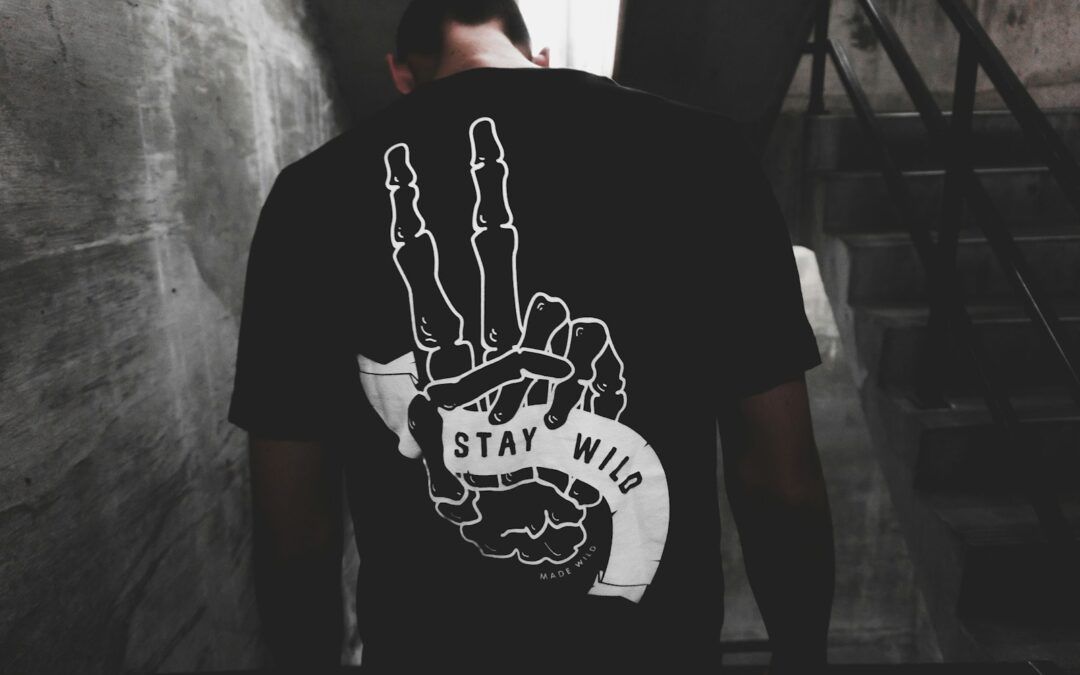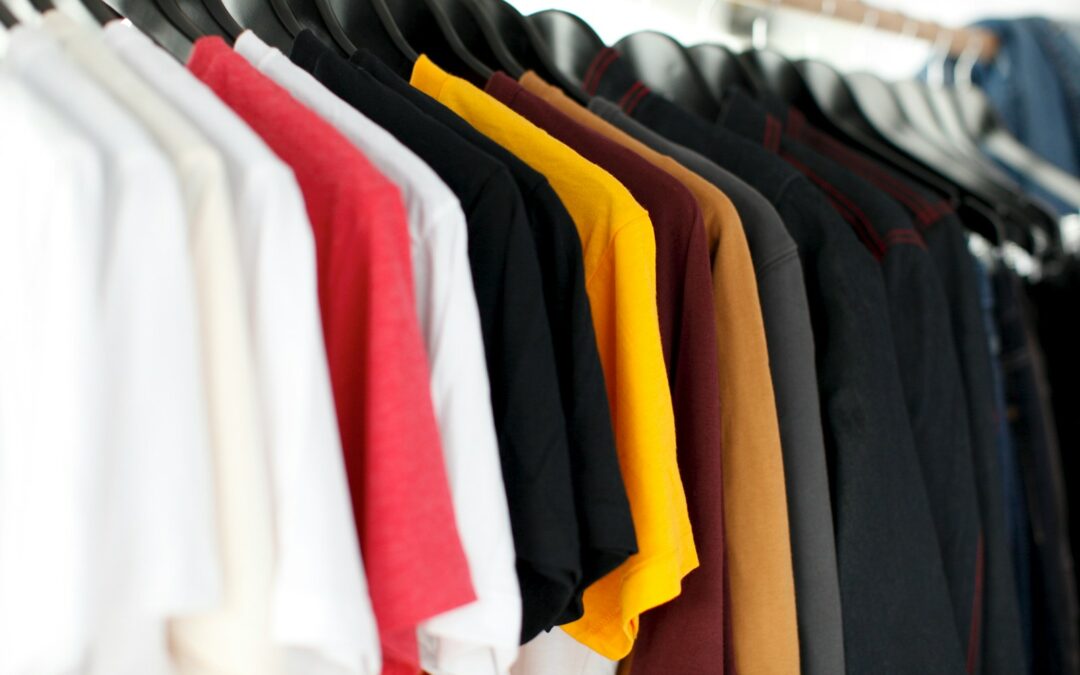When it comes to elevating your DIY shirt projects with custom designs, choosing the right iron on transfers for shirts is crucial. Direct to film (DTF) transfers and more traditional iron-on transfers each have their own merits, but which is best for you? For the burgeoning DIY enthusiast, clarity is key.
In this guide, we’ll unpack the intricacies of DTF and iron-on transfer technologies, explore their different applications, and provide insights to help you decide which method suits your unique project needs.

The Method of Creation With DTF Transfers
Selecting the right iron on transfers for shirts requires careful consideration of your options. Among these, DTF transfers stand out as a noteworthy choice due to their distinctive advantages. In the following section, we’ll dive into the unique benefits that make DTF transfers a compelling option for your custom shirt projects.
What is DTF?
DTF, or Direct to Film, is a relatively new technology in the custom transfers industry. It involves printing designs onto a specialty film that is later transferred onto the garment with the use of a heat press. The vibrant colors and fine details achieved with DTF are often a major draw for creators.
The DTF Process
The DTF process involves printing an image onto a sheet of specialized transfer film using a DTF printer. Once your design is ready, it’s printed onto the film using CMYK inks, capturing the nuances of color and detail with precision.
The next step is applying a white adhesive powder over the image, laying a foundation for its transfer onto the garment. After shaking off excess powder, the film is placed onto the shirt and pressed using a heat press machine, effectively adhering the design onto the fabric.
Benefits of DTF Transfers
The primary benefits of DTF transfers are the vividness and durability they offer. The DTF method can produce images with a high level of detail and color vibrancy that are difficult to achieve with other methods.
Additionally, DTF transfers can maintain their clarity through repeated washes, making them a favorite among those looking for long-lasting designs.
Durability and Quality
DTF transfers are known for their ability to withstand the test of time and the laundry cycle with minimal fading. They are also pliable, conforming to the texture of the fabric, which ensures the design moves with the shirt, reducing the likelihood of deterioration over time.
Highlights of DTF
-
Color Vibrancy: DTF boasts impressive color retention, even after multiple washes.
-
Fine Detail: Ideal for intricate designs, DTF preserves small and detailed elements.
-
Durability: Known for its lasting impressions, DTF transfers don’t easily fade or peel.
-
Application Range: Beyond t-shirts, DTF works on a broad spectrum of fabrics, including unconventional choices like neoprene and leather.
Understanding Iron-On Transfers
Similar to DTF printing, custom iron-on heat transfers utilize heat to meld a print or design onto fabric. It’s a technique that DIY enthusiasts have gravitated to for years due to its accessibility and relative simplicity.
The Iron-On Process
Using an iron-on transfer involves a straightforward process. Begin by printing your desired image onto a special transfer paper designed for home use. After cutting out the image, place it face down onto the shirt, and using a household iron, apply heat and pressure for a set amount of time. The heat causes the design to melt and adhere to the fabric, effectively transferring the image.
Benefits of Traditional Iron-On Transfers
Iron-on transfers excel in their accessibility and ease of use. They are the go-to method for beginners or for those who wish to create quick, one-off designs at home. Iron-on transfers can produce satisfactory results and are favored for their simplicity.
Limitations and Considerations
Though iron-on transfers are simple to apply, they do have limitations. The color vibrancy of iron-on designs will be less intense and the details less defined compared to DTF or other professional methods. Additionally, the application is crucial; if not done correctly, the design’s lifespan and washing resistance could be compromised.
Furthermore, it’s essential to be aware of the fabric limitations when applying DIY iron-on transfers. Not all materials are suitable for iron-on applications, with some fabrics potentially melting under the heat or not allowing the transfer to properly bond.
Therefore, choosing the right fabric, such as cotton or polyester blends well-suited for DIY iron-on transfers, becomes an indispensable consideration in preserving the vibrancy and durability of your custom designs.
Pros and Cons
-
Accessibility: Iron-on transfers are newbie-friendly, requiring only a household iron.
-
Affordability: They are often more affordable for single designs or small batches.
-
Less Involved Process: No need for professional grade heat press equipment.

Navigating the Differences
In our comparison between DTF and iron-on transfers, the stakes are high. It’s not just a matter of slap-and-go; it’s longevity, vibrancy, and precision on the line.
Quality Comparison
DTF excels in the domain of quality. Its ability to heat and pressure application ensure that the design becomes almost indistinguishable from the fabric, a level of integration that iron-on transfers can struggle to match.
Iron-ons, by contrast, can leave a slight edge and aren’t as fixed, making them prone to damage in the wash.
Application Method and Suitability for Fabrics
The application techniques for these iron-on transfer methods exhibit notable differences. DTF transfers typically necessitate the use of a heat press to apply the design, guaranteeing consistent temperature and pressure throughout the process.
On the other hand, traditional iron-on transfers, as implied by their name, can be applied with a standard hot iron. However, this method might yield varied outcomes, owing largely to the unpredictable nature of heat distribution and pressure achieved with at-home ironing tools.
DTF’s heat press method is more versatile, allowing application to fit a wide range of fabrics, from cotton and poly to the more peculiar choices like nylon and non-woven polypropylene. Iron-on transfers generally perform best with 100% cotton and some blends, leaving fabrics like neoprene and leather out of the equation.

A Comparison of DTF and Iron-On Transfers for Shirts
When it comes to choosing between DTF and iron-on transfers for shirts, a variety of factors come into play. Let’s take some time to evaluate the critical aspects, including cost, application complexity, and the longevity of the end result.
Cost-Effectiveness
Iron-on transfers are often the more affordable choice, especially for small-scale or one-time projects. The required supplies are generally less expensive, and the absence of a specialized printer brings down the initial investment. DTF transfers, on the other hand, are more cost-efficient for bulk printing or when high-quality, detailed designs are essential.
Application Complexity
DTF transfers demand equipment like a heat press machine and may require a learning curve to master. In contrast, iron-on transfers for shirts can be applied with a household iron, making them instantly accessible even to novices. The complexity of application should be a critical consideration based on your experience level and the project’s scale.
Longevity and Washability
In terms of longevity, DTF transfers outshine iron-ons. DTF prints can last through dozens of washes without significant wear or tear. Iron-on designs may lose quality or peel over time, especially if the application process isn’t precisely executed. Tailor your decision to the expected wear and tear of your custom garments; for keepsake or professional-grade items, DTF is likely the preferable choice.
Navigating Your DIY Journey
Every project carries its unique requirements, and selecting the appropriate transfer type is critical to reflecting this diversity. Consider whether you’re aiming for a single-use design on a basic tee or envisioning an extensive collection spanning multiple fabric types. Posing these kinds of inquiries to yourself is crucial in identifying the most suitable application technique for your project’s specific needs.
Next, we’ll examine optimal scenarios for each method, guiding you towards the ideal iron-on transfer choice for your shirt designs.

Best Use Cases for DTF and Iron-On Transfers
With the differences between DTF and iron-on in mind, when should you reach for one over the other?
When to Choose DTF Transfers
Opt for DTF when you need highly detailed, long-lasting images for products that endure repeated use or washing. DTF is excellent for producing batches of garments, ensuring each replicates the original’s sharpness and vibrancy. If you’re working with complex materials, DTF transfers should be your default.
When to Opt for Iron-On Transfers
Iron-on transfers shine for spur-of-the-moment personalization, quick projects, or the occasional at-home creation. If you’re printing on cotton or polyester blend shirts, an iron and a roll of transfer paper can adapt to the your basic DIY needs.
DTF vs. Iron On Transfers for Shirts | The Choice is Yours
The choice between DTF and iron-on transfers ultimately comes down to your specific project requirements. For a one-of-a-kind piece with fine details and vibrant colors, DTF takes the lead. But for quick, cost-effective designs on familiar fabrics, we find the classic iron-on method still holds its own.
Whichever you choose, remember that at the heart of DIY is the joy of creating. Your passion and creativity will undoubtedly shine through, no matter the transfer technique. And as the DIY movement continues to flourish, adding more technologies like DTF and iron-on transfers will only add to the endless possibilities that creators can explore.
If you’re looking to shop for DTF transfers, explore our gang sheet and single-image DTF transfer options. Once you request a design, we’ll get started on your custom DTF transfers. Make sure to check the sizes of your design and add any notes about your order when you place it. Shipping is quick, quality is high, and you’ll find no other businesses like Limitless Transfers!





